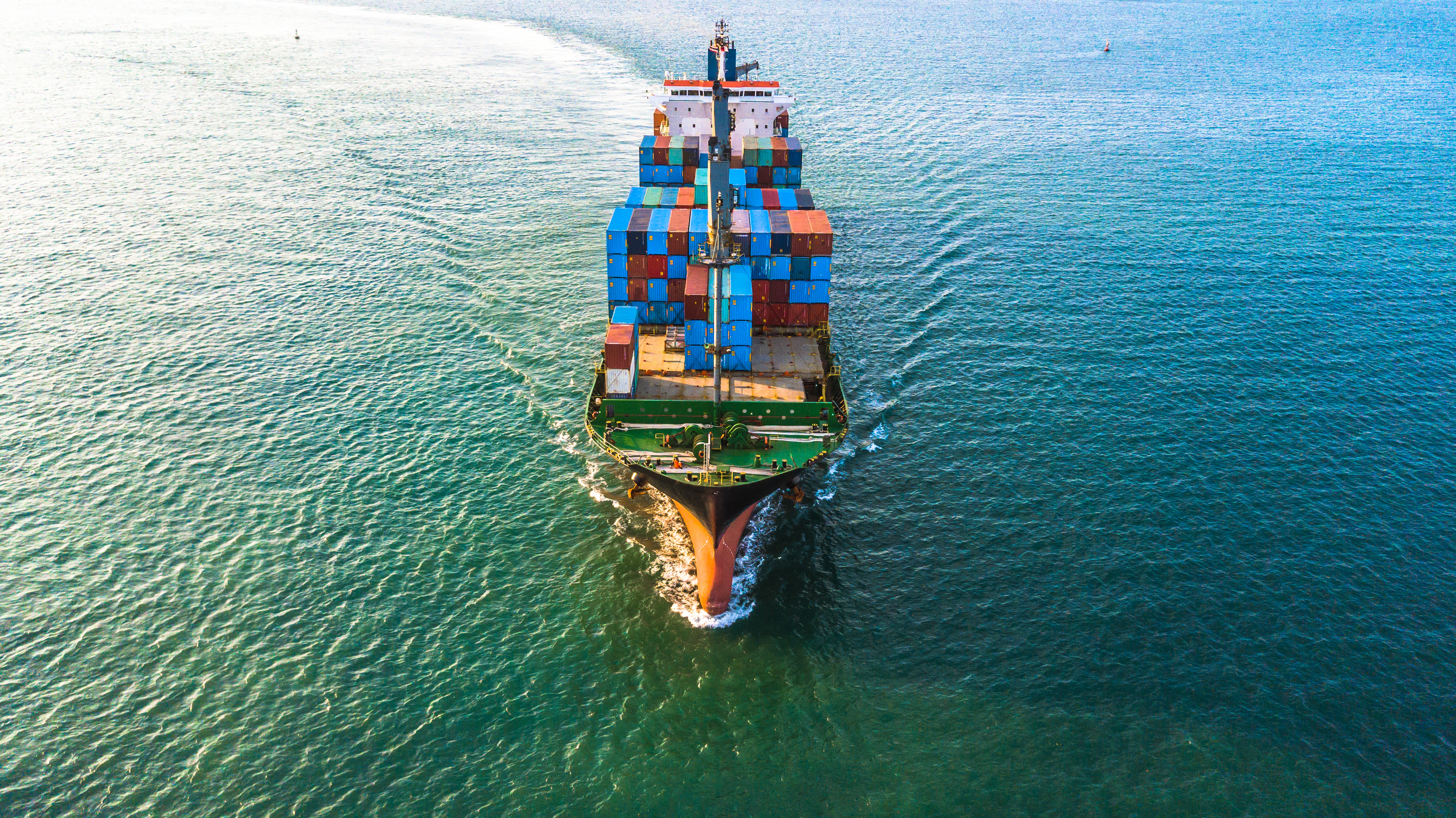Navigating choppy waters: how businesses are changing course amidst global trade challenges

Published June 18, 2024 • 7 Min Read
While recent events in the Red Sea have caused temporary setbacks, the bigger picture reveals a combination of factors contributing to challenges for international trade. Read on to discover actionable strategies for mitigating risks and staying resilient through turbulent times.
Much like the unpredictable nature of a journey at sea, businesses of all sizes are striving to keep their cargo afloat as they navigate the complexities of today’s global shipping landscape. While recent events in the Red Sea have caused temporary setbacks, the bigger picture reveals a combination of factors contributing to challenges for international trade. With that, we’ve tapped into our network of RBC clients including Christian Siviere from X and Phil Hsieh from East Mountain Forest Products for their thoughts on mitigating risks and staying resilient through these turbulent times.
Disruptions at sea: separating facts and fears
With the attacks by Houthi rebels in the Red Sea forcing cargo ships to reroute and endure a lengthy—and costly—detour, businesses are faced with disruptions to their supply chains. With around 15% of world trade and 30% of global container traffic typically passing through the Suez Canal, these disruptions go beyond mere inconveniences, affecting global trade on a significant scale.
“Everyone’s impacted by the Red Sea crisis — we’re literally all in the same boat,” says Christian Siviere, a seasoned international trade consultant. “We’ve seen the same issues as during the pandemic when prices went through the roof and shipping slowed down.”
But Siviere says increased freight prices aren’t necessarily a direct effect of the Red Sea crisis.
“Except for the first few months, there hasn’t been a huge impact from the Red Sea crisis on shipping,” he continues. “Things have mostly evened themselves out. If prices are going up now, it’s because of speculation or anticipation of the peak season coming up.”
Siviere adds that the highly deregulated environment of ocean shipping means that prices are difficult to predict. “It’s not an exact science, and there’s no fair price,” he says. “One day a shipping container is $1,000, the next day it’s $10,000.”
In the case of the Red Sea crisis, which prompted ships to detour via longer routes around South Africa, insurance premiums and shipping rates temporarily surged. However, he stresses that such fluctuations are common. “These effects from global events don’t last very long because we deal with a market with huge swings based on supply and demand,” he says.
For Phil Hsieh, the managing director of East Mountain Forest Products — a company that imports and exports forest products and building supplies — the Red Sea crisis is merely one of many hurdles that trade partners have had to overcome.
“Things like this happen all the time, but people didn’t know about them in the past because mainstream media didn’t cover it,” he says. “Back then, information didn’t travel so fast, so your margin could protect your business from this type of turmoil. Now with news spreading almost instantly, not only do businesses start worrying, but the general public does too.”
Hsieh says that this swift spread of information has a type of ripple effect, with shipping companies preemptively increasing their fees to mitigate risk and uncertainty. And while his company doesn’t heavily rely on the affected route, the repercussions are felt across the logistics sector. He explains that when other businesses seek alternative routes, it can increase demand in the countries he imports from, potentially resulting in price hikes from suppliers.
“I may have to pay a premium price, and then our customer might find somewhere that’s cheaper. So it throws the supply chain completely off whack.” But he reiterates that such disruptions are cyclical and not uncommon. “This happens every three or four years. It’s not unusual,” he says.
Weathering the storm: strategies for trade businesses
Despite the challenges trade businesses are facing, companies can find ways to maintain their operations. Here are some key strategies:
Anticipate and prepare
Siviere says small and medium-sized businesses should anticipate shipping obstacles and prepare accordingly. He advises his clients to build up their inventory and develop a local or regional supply chain if possible.
Hsieh echoes this advice, noting that if his customers have enough inventory to last them through periods of inflation, then they can ride it out. “If they don’t have that surplus of inventory, then the hard part comes,” he says, “because if you’re not willing to pay for the freight, you’re going to have empty shelves.” Having excess inventory provides a buffer for delays or disruptions in the supply chain, so businesses can ensure that they can continue to meet customer demand.
Diversify your network
Another tactic to survive shipping disruptions is to diversify the geographic flow of goods to create a more resilient supply chain. Having multiple sources of supply reduces the chance of a single disruption causing a complete halt in business.
“If you have a big shipment coming up, consider splitting it into two shipments and use two different routes,” Siviere says. He notes that this strategy may increase costs initially, but can help ensure your business can maintain operations.
For Hsieh, his company uses suppliers from different countries, which protects them from relying on a single route for their shipping needs. He’ll also adapt operations according to changing market conditions.
“We import and export simultaneously, so we always have shipments flowing both ways,” he adds. “So when we see something like what’s happening in the Red Sea, we’ll switch to doing more exporting to Asia or Europe. It always balances out.”
Keep the lines of communication open
For importers and exporters, having an ongoing dialogue with suppliers and customers about potential price changes and supply chain issues can build trust and foster collaboration.
Hsieh says that his company knows firsthand the critical need for urgent and honest communication, recalling lessons learned from the early days of the pandemic.
“We didn’t react fast enough then, so we know now to give our distributors and customers the heads up that prices may increase,” he says. “Our customers might know the news even faster than we do, so there’s no point in trying to gloss over a situation like the Red Sea crisis. We have to be transparent and work as partners with our customers and suppliers.”
Track your course
Siviere also emphasizes the importance of developing strong relationships with your supply chain network, particularly so businesses can have a solid handle on the status of their shipments.
“Logistics isn’t something you can leave to chance or just improvise,” he says. “You have to get more involved and know your vendors and shipping partners and have good relationships, so you have that flow of information.”
Additionally, he says it’s critical to have a reliable system for tracking your goods so you know where your inventory is at all times.
An industry in transition
Apart from the current situation in the Red Sea, the global shipping landscape is undergoing a significant transformation. Siviere notes that new labour laws and regulations, as well as international trade sanctions, are adding more layers of complexity for businesses, especially SMEs.
“These policies serve an important purpose, but they present challenges to companies that now have new regulations and reporting obligations to follow,” Siviere says. “The smaller your company, the harder it is to adapt to all these new rules because you don’t have the same resources as larger enterprises.”
Siviere says he sympathizes with new entrepreneurs who want to launch a business while navigating the many technicalities in place.
“It’s quite tricky for companies right now, and it requires more preparation,” he says.
Despite the challenges of global trade, there are opportunities for businesses to adapt and thrive. By staying informed, fostering agility, and leveraging available resources, trading companies can wade through these complexities with resilience and strategic planning.
Our international trade specialists can help you navigate your expansion so you can Go Global with confidence.
Learn more about we can help you grow your business outside Canada.
This article is intended as general information only and is not to be relied upon as constituting legal, financial or other professional advice. A professional advisor should be consulted regarding your specific situation. Information presented is believed to be factual and up-to-date but we do not guarantee its accuracy and it should not be regarded as a complete analysis of the subjects discussed. All expressions of opinion reflect the judgment of the authors as of the date of publication and are subject to change. No endorsement of any third parties or their advice, opinions, information, products or services is expressly given or implied by Royal Bank of Canada or any of its affiliates.
Share This Article





